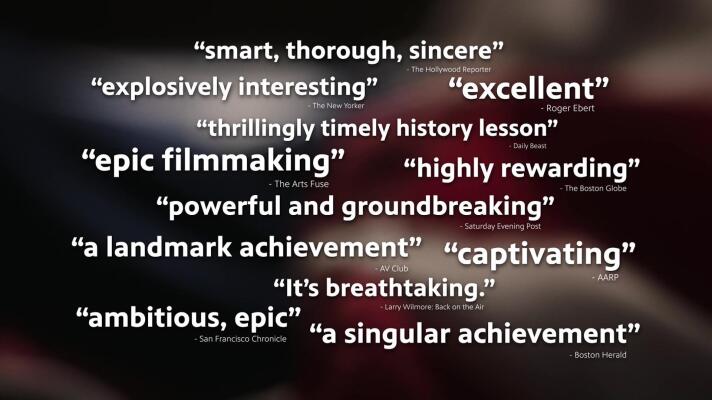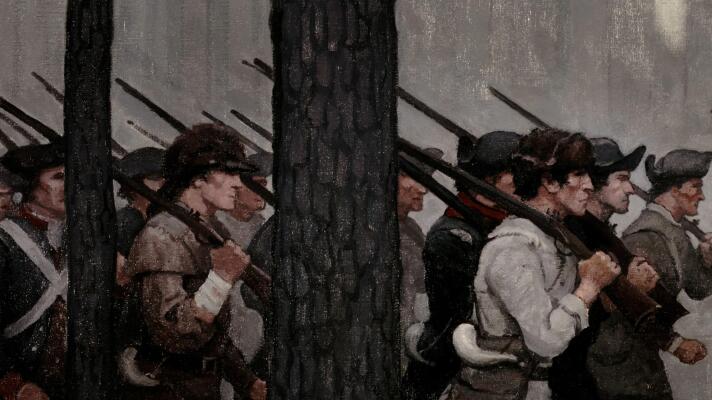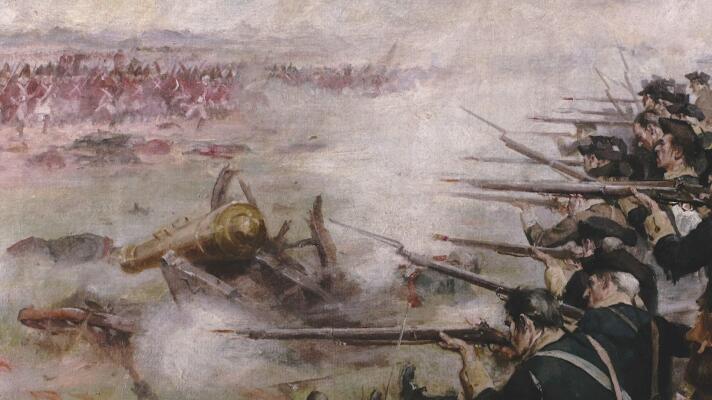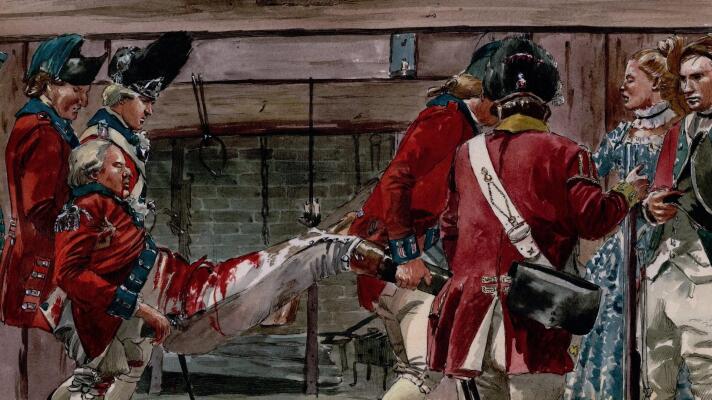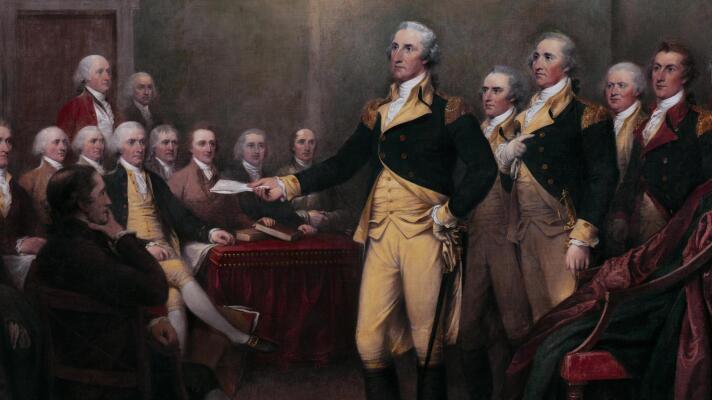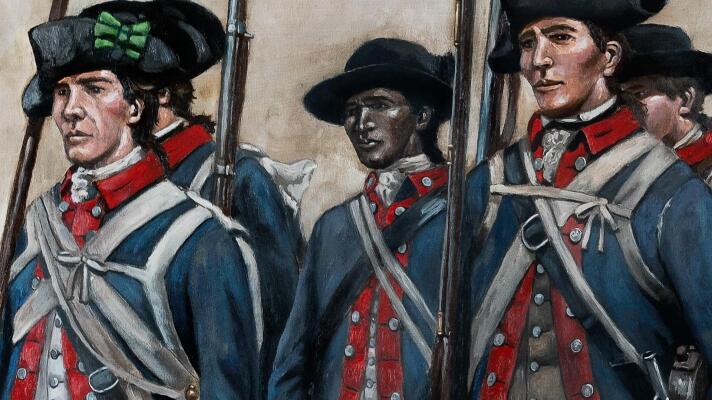Extras
"Explosively Interesting" - critics agree The American Revolution must-watch TV.
Preview:
0:30
A spark ignites—quiet, unstoppable. What follows changes everything.
Clip:
0:50
James Forten was 14 when he signed onto a privateer to fight for his country.
Clip:
S1
E6
|
2:36
Washington uses bonuses and drafts to encourage Americans to join the Continental Army.
Clip:
S1
E4
|
4:31
Philadelphia falls, but the American victory at Saratoga allows France to enter the war.
Episode:
S1
E4
|
1:55:38
The war drags on and moves to new theaters: at sea, in Indian Country, and in the South.
Preview:
S1
E5
|
0:30
The British seize Philadelphia, but Washington plans to retake the city at the Battle of Germantown.
Clip:
S1
E4
|
6:29
General Horatio Gates' force clashes with the British, beginning the Battle of Saratoga.
Clip:
S1
E4
|
6:18
The Six Nations of the Haudenosaunee choose opposing sides at the Battle of Oriskany.
Clip:
S1
E4
|
8:07
The economic realities of the war start to settle in for both the Americans and the British.
Clip:
S1
E5
|
2:59
Victory at Yorktown secures independence. Americans aspire for a more perfect union.
Episode:
S1
E6
|
2:10:41
Political protest escalates into violence. War gives thirteen colonies a common cause.
Episode:
S1
E1
|
1:56:09
Philadelphia falls, but the American victory at Saratoga allows France to enter the war.
Episode:
S1
E4
|
1:55:38
Washington takes command of the Continental Army. Congress declares American independence.
Episode:
S1
E2
|
2:04:18
The war drags on and moves to new theaters: at sea, in Indian Country, and in the South.
Episode:
S1
E5
|
1:53:53
Washington abandons New York City and flees across New Jersey, before attacking Trenton.
Episode:
S1
E3
|
1:54:35




